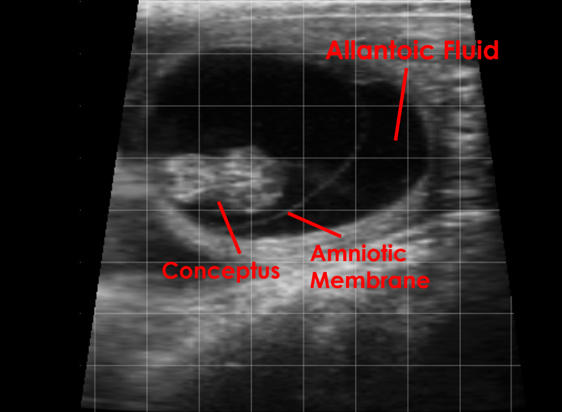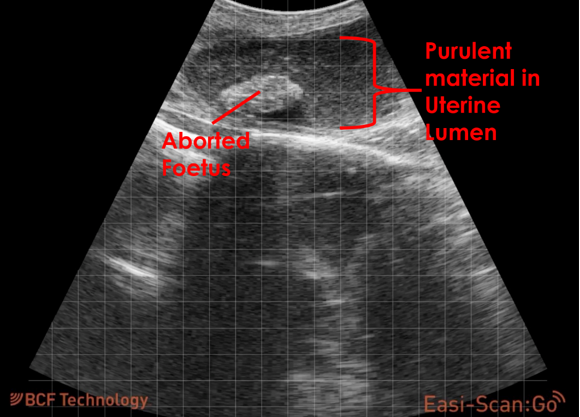Confirmation of fetal viability in cattle
A case study detailing the confirmation of viability in cattle.
The earlier you detect a non-viable fetus, the more quickly you can treat and rebreed the cow. In dairy and beef cattle, early embryonic death rates vary between 6 and 25%.
The use of ultrasound does not increase these rates. Therefore, rechecking a cow following an initial positive diagnosis of pregnancy is very important.
Using ultrasound allows you to see the movement and heartbeat of the fetus which confirms that the pregnancy is still viable. Use of manual palpation to diagnose fetal viability often results in misdiagnosis and a prolonged period where the cow is open.
Some indicators of fetal death are:
- Lack of movement or heartbeat (a heartbeat can be seen around 22 days and movement can be observed from day 45)
- Presence of flocculent material in the fetal fluids signifying that the fetus is degenerating (> day 75 of gestation it is normal for the amniotic fluid to contain visible echogenic particles compared to the allantoic fluid which remains black)
- Separation of the fetal structures from the uterine wall
The image above shows a normal foetus at 42 days gestation. Note the anechoic (black) amniotic and allantoic fluid surrounding the foetus.
The image above shows an aborted foetus. Note the flocculent (echogenic) fluid within the uterine lumen. There are no visible foetal membranes and the foetus has become an undefined mass of hyperechoic tissue.
Further reading
DeCôteaux L., Gnemmi G., Colloton J. (2010) Practical Atlas of Ruminant and Camelid Reproductive Ultrasonography 1st Edn., Wiley-Blackwell, Iowa, pp 81 – 124

